 エイケンくん
エイケンくん要約問題の対策って何すればいいの?



イイタイコトを見つけることと、言いかえがポイントだよ!
本記事では必ずマネすべき「要約のコツと要約問題の予想問題」を紹介します。
英検1級一発合格を目指す人だけでなく、リベンジしたい人にも参考になるはずです。


いつき先生
記事を書いているわたしは、英語の教員として約10年ほど。
1級の一次試験には3回合格しており、リーディング、リスニング、ライティングすべて80%以上で合格。
英検1級一次試験合格しました。やったー、本当に嬉しい😂
— いつき@英検対策えいごふる (@alphabet_111) July 13, 2020
R 36/41 88%
L 22/27 81%
W 26/32 81%
合計 84/100
3技能すべて80%こえました☺
次の二次試験もせっかくなので80%over狙っていきます!
応援よろしくお願いします😆 pic.twitter.com/wTHTsxfV1y
英語で要約を書くことに慣れていない人が多いと思います。
わたしは今まで、北大、TEAP、早稲田の国際教養の英語要約の添削を長年してきました。
今回は、要約の知識をみなさんに紹介していきます!
2024年リニューアルの変更点


英検リニューアルについて解説します。
要約問題はいつから?
S-CBT: 2024年5月から
本会場: 2024年6月2日から
要約問題はS-CBTでは5月から始まります。
本会場で受験する場合は6月2日からです。
「2024年リニューアル」と言われていますが、実質5月からのスタートです。
1級の変更点は?
準1級の変更点について解説します。
単語問題7問削減


大問1: 語彙: 25問→22問へ
※単語3問へる
大問2: 空所補充: 6問
※変化なし
大問3: 長文問題: 10問 →7問へ
※長文問題3問へる



単語問題が3問なくなります!
単語問題が7問もなくなるのは、おおきな変化です。
語彙問題の比重が微増!




【今まで】
語彙問題: 25問
長文問題: 16問
語彙25: 長文16
= 語彙10: 長文6.4
【2024年リニューアル】
語彙問題: 22問
長文問題: 13問
語彙22: 長文13
= 語彙10: 長文5.9
語彙問題と長文問題を比で表すと、リニューアルの方が語彙問題の比率が少し上がります。
読解の配点は半分
【2016年以前】
語彙: 25問×1点=25点
空所: 6問×1点=6点
長文: 10問×2点=20点
合計: 51点
語彙: 25点 読解: 26点
語彙 < 読解
【2024年リニューアル】
語彙: 22問×1点=22点
空所: 6問×1点=6点
長文: 7問×1点=7点
合計: 35点
語彙: 22点 読解: 13点
語彙 >> 読解
2016年以前から2024年以降を比較すると、読解問題の配点が半分になっています。
英語学習において語彙の重要性は言うまでもありません。
しかし、語彙に偏りすぎているのは今後是正すべきでしょう。
今後の英検協会の動きに注目です。
要約問題が追加!
ライティング問題が1問から2問になります。
【今まで】
大問4: 意見論述問題のみ
【2024年リニューアル】
大問4: 要約問題
大問5: 意見論述問題




大問4に要約問題が追加されます。マークシートがある方の隣にあるのが要約です。
ライティングの採点基準
【意見論述と要約】
内容: 各8点ずつ
構成: 各8点ずつ
語彙: 各8点ずつ
文法: 各8点ずつ
論述と要約: 32点ずつ
→合計64点
要約問題と意見論述問題をそれぞれ採点し、合計64満点で評価されます。
要約問題が32点、意見論述問題が32点とそれぞれ50%ずつです。
要約の作り方
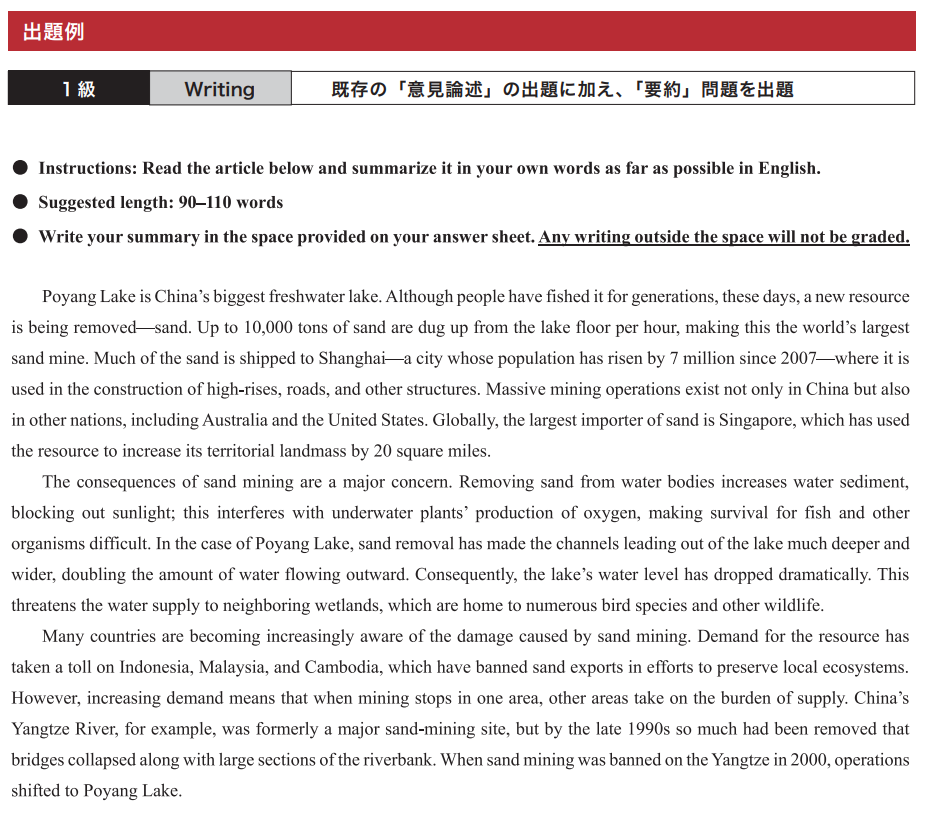

これから実際に要約をつくってみましょう。今回の文章は314語の文章で3パラグラフ構成です。
パラグラフのイイタイコトをつかむ
パラグラフ毎のイイタイコトをつかむことが大切です。
1 パラ Poyang Lake is ~
2 パラ The consequences of ~
3 パラ Many countries are ~
文の始まりにスペースがあるところがパラグラフの始まりです。
要約問題はすべてのパラグラフの内容を盛り込む必要があります。
1 パラグラフ 約20 ~ 30語
2 パラグラフ 約30 ~ 50語
3 パラグラフ 約30 ~ 50語
おおまかな方向性としては1パラを20~30語でまとめる。良い点と悪い点が書かれている2~3パラを30~50語ずつでまとめる。
そうすれば大体90~110語程度におさまるはずです。
2パラの模範解答の語数は12語
英検協会が発表している2パラの模範解答の語数は12語です。
【英検協会の模範解答】
1 パラグラフ 21語
2 パラグラフ 24語
3 パラグラフ 48語



語数バラバラ!
英検協会が公開している模範解答の語数です。かなりバランスが悪いですね……。
少し気持ち悪いですが、公式の発表なので要点さえ要約に入れてあれば、パラグラフ毎の語数は気にしなくても良いかもしれません。
パラフレーズをつかう



言いかえ表現を使いましょう!そうしないと盗用です!



盗用!?
パラフレーズ(言いかえ表現)を使う必要がある理由は、元のテキストの言葉をそのまま使用すると「盗用」とみなされるからです。
これは、特に学問の世界で進むにつれて重要になります。
例えば、大学生になって外国の文献を要約するよう指示された場合、言い換え表現を使わなければ「盗用」の疑いで問題になる可能性があります。
1級レベルは大学上級程度とされているので、きちんと言いかえ表現を使いましょう。
1パラの要約
【1パラの本文】
Poyang Lake is China’s biggest freshwater lake. Although people have fished it for generations, these days, a new resource is being removed ― sand. Up to 10,000 tons of sand are dug up from the lake floor per hour, making this the world’s largest sand mine. Much of the sand is shipped to Shanghai ― a city whose population has risen by 7 million since 2007 ― where it is used in the construction of high-rises, roads, and other structures. Massive mining operations exist not only in China but also in other nations, including Australia and the United States. Globally, the largest importer of sand is Singapore, which has used the resource to increase its territorial landmass by 20 square miles.
[122 words]
要約のポイントは「パラグラフのイイタイコトをつかむ」です。
今回の文章では、「砂が都市の建設のために運び出されている」がポイントだとわかります。
英検協会の解答例
【1パラ本文】
Poyang Lake is China’s biggest freshwater lake. Although people have fished it for generations, these days, a new resource is being removed ― sand. Up to 10,000 tons of sand are dug up from the lake floor per hour, making this the world’s largest sand mine. Much of the sand is shipped to Shanghai ― a city whose population has risen by 7 million since 2007 ― where it is used in the construction of high-rises, roads, and other structures. Massive mining operations exist not only in China but also in other nations, including Australia and the United States. Globally, the largest importer of sand is Singapore, which has used the resource to increase its territorial landmass by 20 square miles.
[122 words]
【英検協会の解答例】
Sand is being mined in large quantities from bodies of water around the world to fuel the development of urban areas.
[21 words]
オレンジ 青 緑: 言い換え表現
今から要約の作り方を解説します。
要約の2つのコツ
具体的な数字や固有名詞は書かない
【1パラの本文】
Poyang Lake is China‘s biggest freshwater lake. Although people have fished it for generations, these days, a new resource is being removed ― sand. Up to 10,000 tons of sand are dug up from the lake floor per hour, making this the world’s largest sand mine. Much of the sand is shipped to Shanghai ― a city whose population has risen by 7 million since 2007 ― where it is used in the construction of high-rises, roads, and other structures. Massive mining operations exist not only in China but also in other nations, including Australia and the United States. Globally, the largest importer of sand is Singapore, which has used the resource to increase its territorial landmass by 20 square miles.
青: 数字や固有名詞
【英検協会の解答例】
Sand is being mined in large quantities from bodies of water around the world to fuel the development of urban areas.
→数字や固有名詞がない!
基本方針は具体的な数字や固有名詞は書かないということです。
一部の国の話の場合は固有名詞を要約に入れる必要があります。しかし、今回は「中国だけではなく、ほかの国でも問題がある」と書かれています。
こういった場合は、「中国」と要約に書く必要はありません。
具体例の前がイイタイコト



抽象と具体はどっちがイイタイコトですか?



抽象がいいたいことです!
【1パラの本文】
~ 略 ~ Massive mining operations exist not only in China but also in other nations, including Australia and the United States. ~ 略 ~
青: 具体例の前
オレンジ: 具体例の合図
【英検協会の解答例】
Sand is being mined in large quantities from bodies of water around the world to fuel the development of urban areas.
→具体例の前が模範解答になってる!
including は「~を含めて」は具体例の合図です。
具体例の前が抽象的な内容なので、including の前が抽象的な内容です。なので、including の前を要約に入れようという発想になるわけです。
ちなみに準1級のサンプル問題でも including が登場しています。
including や such as などの前が大切なことだとわかります。



including の前は必ず要約にいれるの?



入れることが「多い」です。しかし、文脈も確認してくださいね!
オリジナル解答例
【1パラ本文】
Poyang Lake is China’s biggest freshwater lake. Although people have fished it for generations, these days, a new resource is being removed ― sand. Up to 10,000 tons of sand are dug up from the lake floor per hour, making this the world’s largest sand mine. Much of the sand is shipped to Shanghai ― a city whose population has risen by 7 million since 2007 ― where it is used in the construction of high-rises, roads, and other structures. Massive mining operations exist not only in China but also in other nations, including Australia and the United States. Globally, the largest importer of sand is Singapore, which has used the resource to increase its territorial landmass by 20 square miles.
【オリジナルの解答例】
This large freshwater lake faces severe sand mining, with tons extracted hourly for urban projects. Mining in various nations leads to significant sand import by a city-state expanding its land.
[30 words]
別解を作ってみました。参考にどうぞ!
Mining in various nations leads to significant sand import by a city-state expanding its land.
▼原因→結果「原因によって結果になる」
・原因 lead to 結果
※過去形は led to です
・原因 result in 結果
▼結果→原因「結果は原因によるものだ」
・結果 result from 原因
・結果 come from 原因
因果構文はいろいろな場面で応用がきくので、使えるようにしましょう。
ex. Overwork led to depression.
ex. Depression resulted from overwork.



動画とテンプレを受け取ってみてね!



最短合格に近づけるよ!
2パラの要約
【2パラの本文】
The consequences of sand mining are a major concern. Removing sand from water bodies increases water sediment, blocking out sunlight; this interferes with underwater plants’ production of oxygen, making survival for fish and other organisms difficult. In the case of Poyang Lake, sand removal has made the channels leading out of the lake much deeper and wider, doubling the amount of water flowing outward. Consequently, the lake’s water level has dropped dramatically. This threatens the water supply to neighboring wetlands, which are home to numerous bird species and other wildlife.
[90 words]
続いて2パラの要約をつくります。答えを見る前に自分で要約を書いてみたり、頭の中で答えを思い浮かべてみてください。



答えを見る前に自分でやってみよう!
英検協会の解答例
【2パラの本文】
The consequences of sand mining are a major concern. Removing sand from water bodies increases water sediment, blocking out sunlight; this interferes with underwater plants’ production of oxygen, making survival for fish and other organisms difficult. In the case of Poyang Lake, sand removal has made the channels leading out of the lake much deeper and wider, doubling the amount of water flowing outward. Consequently, the lake’s water level has dropped dramatically. This threatens the water supply to neighboring wetlands, which are home to numerous bird species and other wildlife.
[90 words]
【英検協会の解答例】
Despite the various positive effects that may result from these activities, sand mining also has ecological consequences that endanger the lives of various organisms.
[24 words]
オレンジ 青: 言い換え表現
今から要約の作り方を解説します。
要約のコツ
具体例の前がイイタイコト
【2パラの本文】
~ 略 ~ making survival for fish and other organisms difficult. In the case of Poyang Lake, ~ 略 ~.
青: 具体例の前
オレンジ: 具体例の合図
【英検協会の解答例】
~ 略 ~ sand mining also has ecological consequences that endanger the lives of various organisms.
青: 言い換え表現
in the case of は「~の場合は」という意味の具体例の合図です。
具体例の前が抽象的な内容なので、in the case of の前が抽象的な内容です。なので、in the case of の前を要約に入れようという発想になるわけです。
オリジナル解答例
【2パラの本文】
The consequences of sand mining are a major concern. Removing sand from water bodies increases water sediment, blocking out sunlight; this interferes with underwater plants’ production of oxygen, making survival for fish and other organisms difficult. In the case of Poyang Lake, sand removal has made the channels leading out of the lake much deeper and wider, doubling the amount of water flowing outward. Consequently, the lake’s water level has dropped dramatically. This threatens the water supply to neighboring wetlands, which are home to numerous bird species and other wildlife.
【オリジナルの解答例】
The environmental impact includes increased water sedimentation, harming aquatic plant oxygen production and fish survival. The mining has also altered the lake’s outflow, significantly lowering water levels and threatening nearby wetlands’ ecosystems and wildlife.
[34 words]
英検の模範解答は24語でしたが、それを34語に増やしました。
・increases water sediment
・doubling the amount of water flowing outward
第2パラグラフでは、水の堆積物の増加と水の流出量の増加という2つのポイントが述べられています。
模範解答ではこれらを1つの話題にまとめていますが、オリジナルの解答ではこれら2つのポイントを言いかえて書いています。
3パラの要約
【3パラの本文】
Many countries are becoming increasingly aware of the damage caused by sand mining. Demand for the resource has taken a toll on Indonesia, Malaysia, and Cambodia, which have banned sand exports in efforts to preserve local ecosystems. However, increasing demand means that when mining stops in one area, other areas take on the burden of supply. China’s Yangtze River, for example, was formerly a major sand-mining site, but by the late 1990s so much had been removed that bridges collapsed along with large sections of the riverbank. When sand mining was banned on the Yangtze in 2000, operations shifted to Poyang Lake.
[102 words]
さいごに3パラの要約をつくります。答えを見る前に実際に手や頭を使いましょう!



要約つくるぞー!
英検協会の解答例
【3パラの本文】
Many countries are becoming increasingly aware of the damage caused by sand mining. Demand for the resource has taken a toll on Indonesia, Malaysia, and Cambodia, which have banned sand exports in efforts to preserve local ecosystems. However, increasing demand means that when mining stops in one area, other areas take on the burden of supply. China’s Yangtze River, for example, was formerly a major sand-mining site, but by the late 1990s so much had been removed that bridges collapsed along with large sections of the riverbank. When sand mining was banned on the Yangtze in 2000, operations shifted to Poyang Lake.
[102 words]
【英検協会の解答例】
In response, some governments are trying to mitigate the harm that arises from this by enacting laws that prohibit the export of sand. Unfortunately, banning sand mining appears to only be a temporary solution in some locations as mining operations often end up simply moving to other sites.
[48 words]
オレンジ 青: 言い換え表現
今から要約の作り方を解説します。
要約の2つのコツ
具体的な数字や固有名詞は書かない
【3パラの本文】
Many countries are becoming increasingly aware of the damage caused by sand mining. Demand for the resource has taken a toll on Indonesia, Malaysia, and Cambodia, which have banned sand exports in efforts to preserve local ecosystems. However, increasing demand means that when mining stops in one area, other areas take on the burden of supply. China’s Yangtze River, for example, was formerly a major sand-mining site, but by the late 1990s so much had been removed that bridges collapsed along with large sections of the riverbank. When sand mining was banned on the Yangtze in 2000, operations shifted to Poyang Lake.
青: 数字や固有名詞
【英検協会の解答例】
In response, some governments are trying to mitigate the harm that arises from this by enacting laws that prohibit the export of sand. Unfortunately, banning sand mining appears to only be a temporary solution in some locations as mining operations often end up simply moving to other sites.
→数字や固有名詞がない!
1パラと同様、具体的な数字や固有名詞は書かないということは大切です。
英検協会が公開している動画でも、固有名詞は書かなくて良いと言っています。
100%NGという訳ではありませんが、基本方針として、数字・固有名詞は不要という考え方でOKです。
具体例の前がイイタイコト
【3パラの本文】
~ 略 ~ However, increasing demand means that when mining stops in one area, other areas take on the burden of supply. China’s Yangtze River, for example, was formerly a major sand-mining site, but by the late 1990s ~ 略 ~
青: 具体例の前
オレンジ: 具体例の合図
【英検協会の解答例】
~ 略 ~ Unfortunately, banning sand mining appears to only be a temporary solution in some locations as mining operations often end up simply moving to other sites.
→具体例の前が模範解答になってる!
for example はご存じの通り具体例の合図です。主語と動詞の間に挿入されています。
具体例の前が抽象的な内容なので、increasing demand means ~ 以下を言いかえてあげればOKです。
オリジナル解答例
【3パラの本文】
Many countries are becoming increasingly aware of the damage caused by sand mining. Demand for the resource has taken a toll on Indonesia, Malaysia, and Cambodia, which have banned sand exports in efforts to preserve local ecosystems. However, increasing demand means that when mining stops in one area, other areas take on the burden of supply. China’s Yangtze River, for example, was formerly a major sand-mining site, but by the late 1990s so much had been removed that bridges collapsed along with large sections of the riverbank. When sand mining was banned on the Yangtze in 2000, operations shifted to Poyang Lake.
【オリジナルの解答例】
Countries are increasingly aware of the environmental harm caused by sand mining, prompting some to ban sand exports to safeguard ecosystems. Yet, as demand continues, mining pressure shifts to new areas, causing ecological damage elsewhere.
[35 words]
なるべく本文に忠実に言いかえをしました。
要約問題のまとめ
【サンプル問題全文】
Poyang Lake is China’s biggest freshwater lake. Although people have fished it for generations, these days, a new resource is being removed ― sand. Up to 10,000 tons of sand are dug up from the lake floor per hour, making this the world’s largest sand mine. Much of the sand is shipped to Shanghai ― a city whose population has risen by 7 million since 2007 ― where it is used in the construction of high-rises, roads, and other structures. Massive mining operations exist not only in China but also in other nations, including Australia and the United States. Globally, the largest importer of sand is Singapore, which has used the resource to increase its territorial landmass by 20 square miles.
The consequences of sand mining are a major concern. Removing sand from water bodies increases water sediment, blocking out sunlight; this interferes with underwater plants’ production of oxygen, making survival for fish and other organisms difficult. In the case of Poyang Lake, sand removal has made the channels leading out of the lake much deeper and wider, doubling the amount of water flowing outward. Consequently, the lake’s water level has dropped dramatically. This threatens the water supply to neighboring wetlands, which are home to numerous bird species and other wildlife.
Many countries are becoming increasingly aware of the damage caused by sand mining. Demand for the resource has taken a toll on Indonesia, Malaysia, and Cambodia, which have banned sand exports in efforts to preserve local ecosystems. However, increasing demand means that when mining stops in one area, other areas take on the burden of supply. China’s Yangtze River, for example, was formerly a major sand-mining site, but by the late 1990s so much had been removed that bridges collapsed along with large sections of the riverbank. When sand mining was banned on the Yangtze in 2000, operations shifted to Poyang Lake.
【英検協会の解答例】
Sand is being mined in large quantities from bodies of water around the world to fuel the development of urban areas. Despite the various positive effects that may result from these activities, sand mining also has ecological consequences that endanger the lives of various organisms. In response, some governments are trying to mitigate the harm that arises from this by enacting laws that prohibit the export of sand. Unfortunately, banning sand mining appears to only be a temporary solution in some locations as mining operations often end up simply moving to other sites.
[93 words]
【英検協会の模範解答】
1 パラ 序論 21語
2 パラ 良い点 24語
3 パラ 悪い点 48語
合計93語



なんとなくわかってきたぞ!
公式の模範解答の語数がバラバラなので、語数をそろえたオリジナル模範解答をつくりました。
オリジナルの解答例まとめ
公式の模範解答の語数がバラバラなので、語数をそろえたオリジナル模範解答をつくりました。
【オリジナルの解答例】
1 パラ 序論 23語
2 パラ 良い点 34語
3 パラ 悪い点 35語
合計92語
【本文】
Poyang Lake is China’s biggest freshwater lake. Although people have fished it for generations, these days, a new resource is being removed ― sand. Up to 10,000 tons of sand are dug up from the lake floor per hour, making this the world’s largest sand mine. Much of the sand is shipped to Shanghai ― a city whose population has risen by 7 million since 2007 ― where it is used in the construction of high-rises, roads, and other structures. Massive mining operations exist not only in China but also in other nations, including Australia and the United States. Globally, the largest importer of sand is Singapore, which has used the resource to increase its territorial landmass by 20 square miles.
The consequences of sand mining are a major concern. Removing sand from water bodies increases water sediment, blocking out sunlight; this interferes with underwater plants’ production of oxygen, making survival for fish and other organisms difficult. In the case of Poyang Lake, sand removal has made the channels leading out of the lake much deeper and wider, doubling the amount of water flowing outward. Consequently, the lake’s water level has dropped dramatically. This threatens the water supply to neighboring wetlands, which are home to numerous bird species and other wildlife.
Many countries are becoming increasingly aware of the damage caused by sand mining. Demand for the resource has taken a toll on Indonesia, Malaysia, and Cambodia, which have banned sand exports in efforts to preserve local ecosystems. However, increasing demand means that when mining stops in one area, other areas take on the burden of supply. China’s Yangtze River, for example, was formerly a major sand-mining site, but by the late 1990s so much had been removed that bridges collapsed along with large sections of the riverbank. When sand mining was banned on the Yangtze in 2000, operations shifted to Poyang Lake.
【オリジナルの解答例】
This large freshwater lake faces severe sand mining, with tons extracted hourly for urban projects. Mining in various nations leads to significant sand import by a city-state expanding its land. The environmental impact includes increased water sedimentation, harming aquatic plant oxygen production and fish survival. The mining has also altered the lake’s outflow, significantly lowering water levels and threatening nearby wetlands’ ecosystems and wildlife. Countries are increasingly aware of the environmental harm caused by sand mining, prompting some to ban sand exports to safeguard ecosystems. Yet, as demand continues, mining pressure shifts to new areas, causing ecological damage elsewhere.
[92 words]



イイタイコトを言いかえるのがポイントです!
要約の注意点
さいごに要約問題を解くときの注意点をお伝えします。
意見を書かない
●Instructions: Read the article below and summarize it in your own words as far as possible in English.
× I believe the Japanese government should ban sand exports.
→ これは要約ではなく意見!
要約に自分の意見は必要ありません。
語数稼ぎで自分の意見を書きたくなっても、意見は書かないでください!



意見と要約はちがいます!
90~110語で書く
●Suggested length: 90-110 words
問題文に語数の目安は90~110語と書かれています。
あくまで目安なので2~3語上下しても減点はないかもしれませんが、なるべく90~110語になるよう心がけましょう。
15分で解く


・試験時間は100分のまま変更なし
・単語3問と長文1題(3問)減→約15分
今回のリニューアルにより、単語問題3問と長文読解1題が削除されました。しかし、試験時間に変更はありません。
単語問題7問と長文読解1題が削除されたことで、およそ15分の時間が要約問題のために使えます。
以前に比べて時間が不足する可能性が高まります。
時間内に問題を解き終えることが難しいという意識を持ち、過去問に取り組むようにしましょう。
さいごに
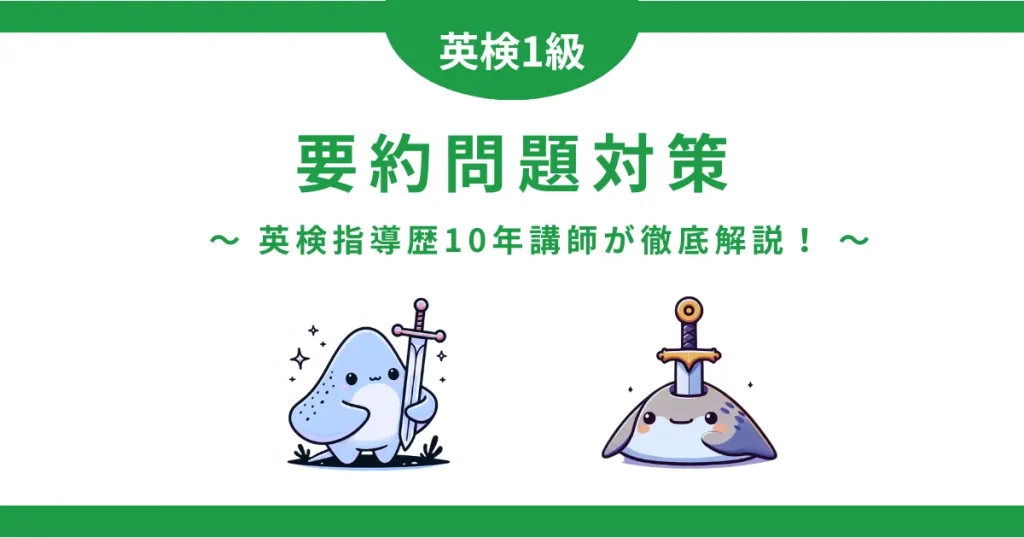

さいごまでご覧いただきありがとうございます。この記事は約10年間英検の過去問を研究してきた集大成です。参考になれば幸いです。
こちらの記事も、1級合格に近づける内容なので、ぜひ読んでくださいね。
・全体の勉強法
→一発合格する勉強法とオススメ参考書
・語彙問題
→おすすめ単語帳13選と英単語帳ルート
・リスニング
→リスニング対策!!おすすめ参考書
・ライティング (要約) (本記事)
→要約問題対策
・CSEスコアについて
→何問正解でギリギリ合格?CSEスコアと素点の換算表
・二次試験対策
→二次試験・おすすめ参考書と勉強法

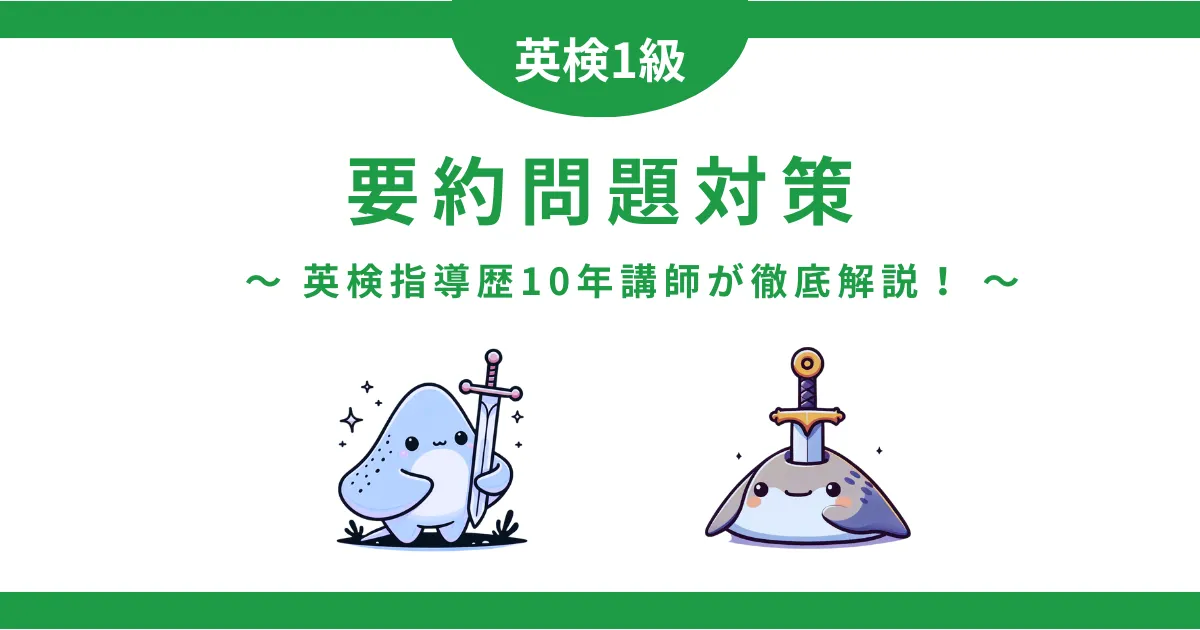
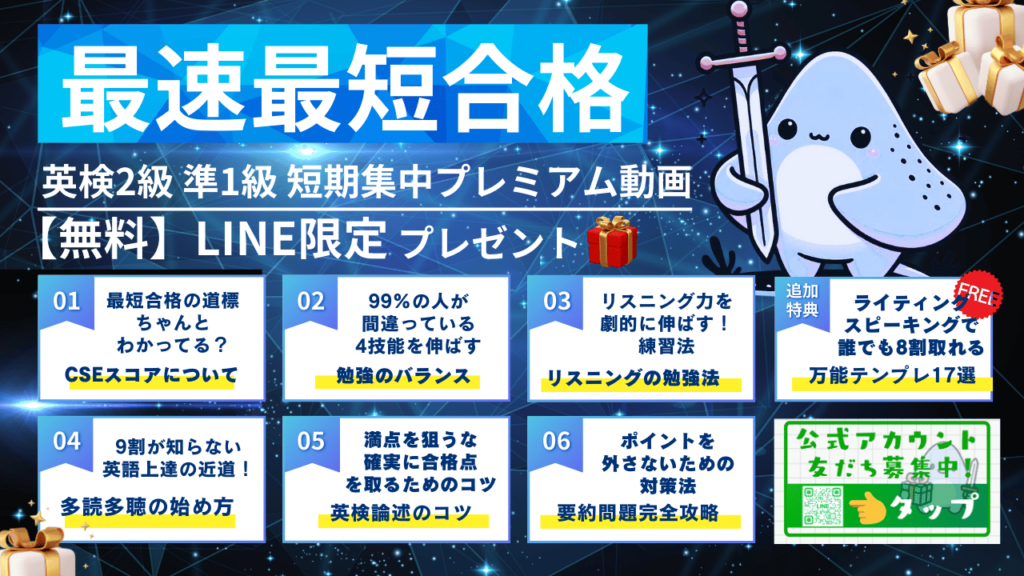
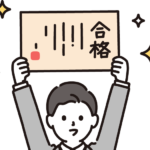


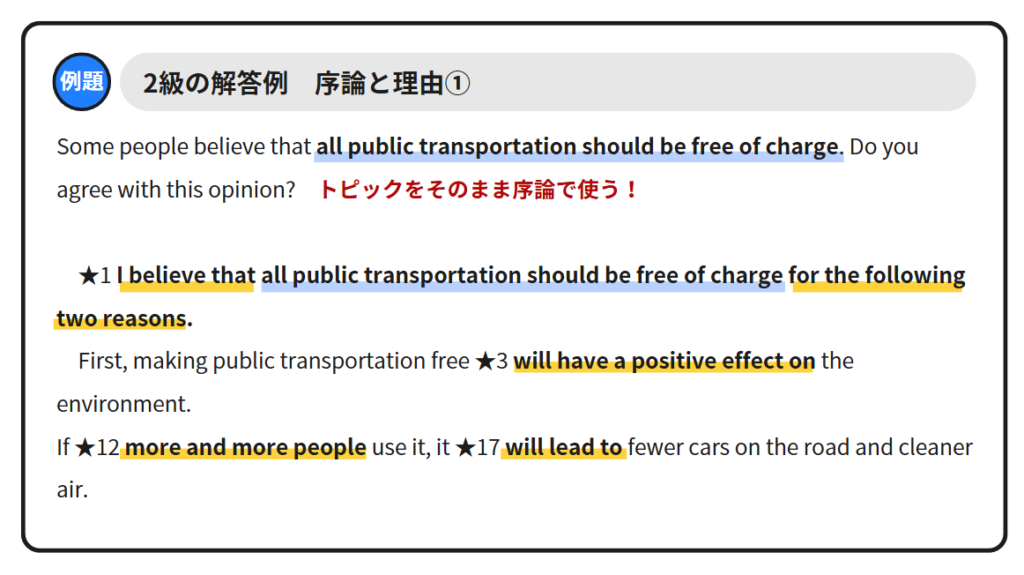
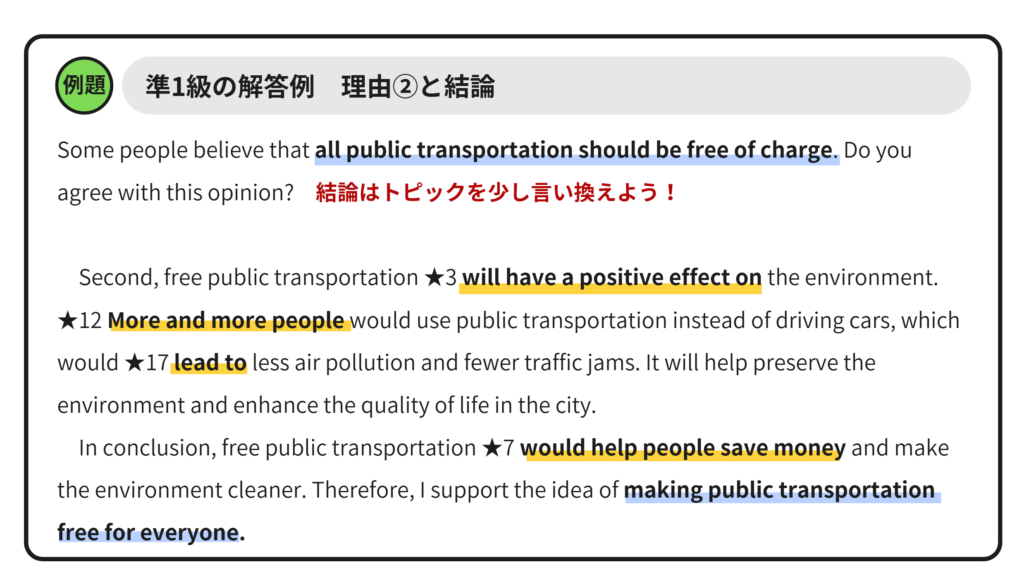
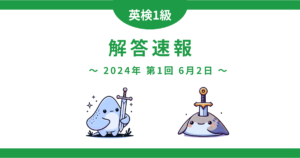
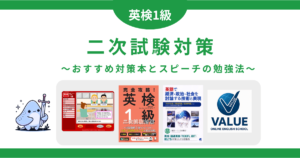
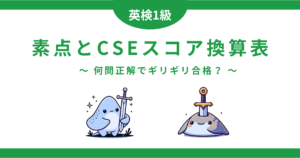
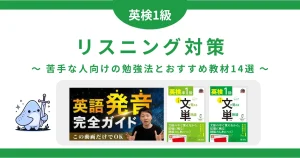
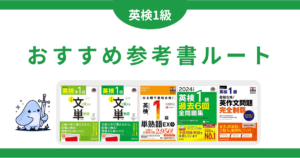
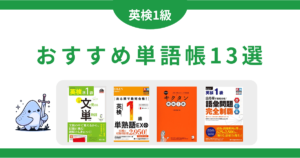
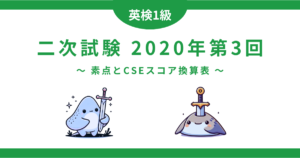
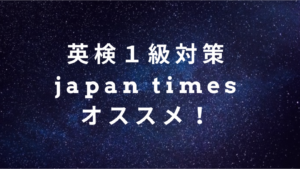
コメント
コメント一覧 (6件)
こんにちは!一級の新形式をまだ受けたことがなく、どうしたら…と考えていた時、ここのページにたどり着きました。素晴らしい要約と、文章と単語、文法のセレクトで、このように書けたら!とさっそく保存し勉強に役立てました。
一つだけ質問なのですが、文中にimportationという単語があり、初めて聞いたのですがこれは普通にimport(s) ではいけないのでしょうか。
Monaさん
ありがとうございます。確認したところ sand importation は不自然な表現でした。コメントありがとうございます ^^
もっと有益な記事を出せるようがんばります。応援しています!
いつき先生
さっそくのお返事、ありがとうございます。不自然だったのですね、あまり聞いたことがないと思っただけだったのですが、お調べいただきありがとうございます。
要約がとても苦手なので、先日さっそく本を買いにいきましたが、2級までの教本だったこともあり内容がやや薄く、このサイトを最初に見つけていればと悔やんでいます。
これからも参考にして勉強していきたいと思いますので、どうぞよろしくお願いいたします。
Monaさん
importationの不自然さに気づけるので、英語力は相当ある方だなぁとおどろきました。
なにかご要望などあれば、ブログのネタにもなるので(笑)教えてくださいね。
こんにちは。
来年、1月に英検1級を受けます。新形式になってからはまだ受けてません。英作文でいうと、意見論述は、自分の知らない知識を問われる問題の場合、どんなに予習したところで歯がたたないと感じます。その点、要約はある程度、パターンを自分で作ってしまえば、対策はできるように思いました。
私の場合は、総合力不足なので、1次試験突破にするのにも1年は要しそうです。今のところ、合格を目標にするというより、英検1級を受けることで自分の英語学習へのモティベーションをあげられればと思っています。 来年1月は、とりあえず、英作(要約)とリスニングで得点できるようにがんばりたいです。
レモンさん
コメントありがとうございます。意見論述は難しいですよね、少し運も大切です笑
私も1月に再受験するので、ライティングは毎日練習しています。
英検1級はわたしも長期戦になってしまったので、少しでもエイゴフルがレモンさんの合格に貢献できたらうれしいです:D